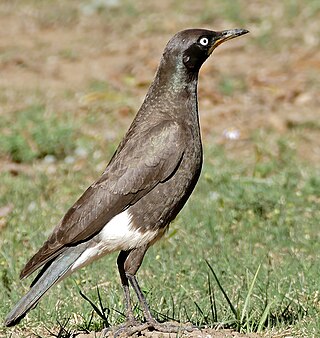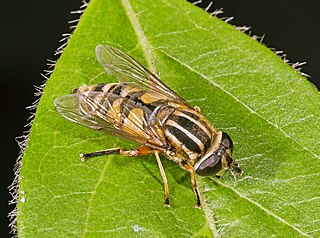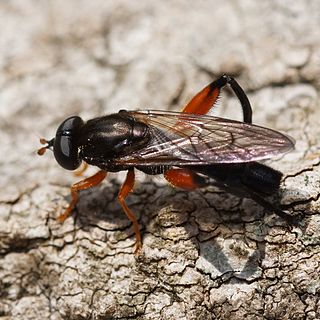
Johann Friedrich Gmelin was a German naturalist, chemist, botanist, entomologist, herpetologist, and malacologist.

The New Zealand falcon is New Zealand's only falcon. Other common names for the bird are bush hawk and sparrow hawk. It is frequently mistaken for the larger and more common swamp harrier. It is the country's most threatened bird of prey, with only around 3000–5000 breeding pairs remaining.

The crimson-fronted barbet, also called Sri Lanka barbet, is an Asian barbet endemic to Sri Lanka where it inhabits tropical moist lowland forests up to 1,300 m (4,300 ft) elevation.

The yellowhead or mohua is a small insectivorous passerine bird endemic to the South Island of New Zealand. Once a common forest bird, its numbers declined drastically after the introduction of rats and stoats, and it is now near threatened.

The New Zealand king shag, also known as the rough-faced shag, king shag or kawau tūī, is a rare bird endemic to New Zealand. Some taxonomic authorities, including the International Ornithologists' Union, place this species in the genus Leucocarbo. Others place it in the genus Phalacrocorax.

The pied starling or African pied starling is a bird endemic to South Africa, Lesotho and Eswatini. It is common in most of its range, but largely absent from the arid northwest and the eastern lowlands of South Africa. It is found in open habitats such as grassland, karoo scrub, thornbush and agricultural land, and often associates with farm animals.

The New Zealand pipit is a fairly small passerine bird of open country in New Zealand and outlying islands. It belongs to the pipit genus Anthus in the family Motacillidae.

Xylota segnis, The Brown-toed Forest Fly, is a common species of hoverfly.

Helophilus are a diverse genus of moderate to large hoverflies, that appear somewhat bee-like. Larvae filter-feed in organic rich water. All Helophilus adults have a distinctive lengthwise striped thorax and a transverse striped abdomen.

Orellia is a genus of tephritid or fruit flies in the family Tephritidae.

Melanostoma fasciatum is a species of hoverfly found in New Zealand, where it is common in agricultural fields and gardens. Locally dense populations of this hoverfly species might effectively reduce pest infestation. Hence, they are perhaps an effective natural and non-toxic bioagent that may control and reduce aphid and small caterpillar populations.

Chalcosyrphus valgus is a medium-sized species of hoverfly with a widespread range throughout the Palearctic region.
Diadegma dispar is a wasp first described by Johann Friedrich Gmelin in 1790.

The South Island saddleback or tīeke is a forest bird in the New Zealand wattlebird family which is endemic to the South Island of New Zealand. Both the North Island saddleback and this species were formerly considered conspecific. The Department of Conservation currently has the South Island saddleback listed as At Risk--Declining.

Cansjera rheedei is a scandent shrub distributed from India, across Southeast Asia, China, Sumatra, Borneo and the Philippines. It was described by Johann Friedrich Gmelin in his work System Naturae ed. 13[bis]: 280 (1791).

Chrysogaster cemiteriorum is a European species of hoverfly which can be found feeding on umbelliferous flowers wetlands and damp meadows.
Milesia semiluctifera is a species of hoverfly in the family Syrphidae.
Sterphus nigrita is a species of Hoverfly in the family Syrphidae.
Neoascia annexa is a species of hoverfly in the family Syrphidae.















